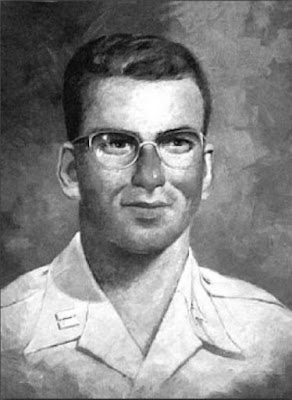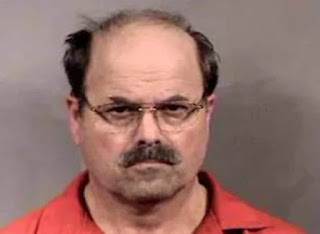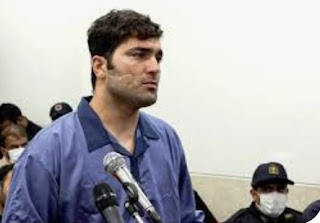More than 56,000 Jews were taken from the ghetto, with 7,000 being shot upon capture and 49,000 deported to concentration camps.
Resistance And Rescuer
Jews responded to the ghetto restrictions with a variety of resistance efforts. Ghetto residents frequently engaged in so-called illegal activities, such as smuggling food, medicine, weapons or intelligence across the ghetto walls, often without the knowledge or approval of the Jewish councils. Spiritual resistance took place through cultural activities such as secret schools and clandestine religious observance, which asserted people’s humanity and individuality.Related: Man beheads 17-year-old wife and shows up with the head in public
The Warsaw Ghetto Uprising
The most well-known attempt by Jews t resist the Nazi regime took place in the Warsaw Ghetto in April 1943 and lasted for almost a month. It was organised by the Żydowska Organizacja Bojowa – ŻOB (Jewish Fighting Organisation), and headed by 23-year-old Mordecai Anielewicz.
In 1942, 300,000 Jews had been deported from the Warsaw Ghetto, and rumours had made it back to the ghetto about the mass murders. Anielewicz encouraged people to resist being rounded up into trains which would take them to the concentration camps. In January 1943 the ŻOB fired shots during a deportation using a small number of weapons that had been smuggled into the Ghetto. After a few days of the attack, Nazi troops retreated. This success inspired further revolt.
On 19 April 1943 the Nazis entered the Warsaw Ghetto to carry out its liquidation, anticipating success within a few days. Around 750 ŻOB resistance fighters fought the well-armed and trained soldiers. The revolt lasted for just over a month until they were finally defeated on 16 May. More than 56,000 Jews were taken from the Warsaw Ghetto during the liquidation with 7,000 being shot upon capture and the remaining 49,000 deported to concentration camps.
There were also violent revolts in Vilna, Bialystok, Czestochowa, and several smaller ghettos.
The Oneg Shabbat Archive
Also in the Warsaw Ghetto, a historian called Emanuel Ringelblum organised a secret group to create an archive documenting life in the ghetto. They gathered testimonies, diaries, posters, reports, photographs and anything else they could find. The documents were placed in three large milk urns which were buried in separate locations around the ghetto, so future societies would know what had happened.
Only three people who had contributed to the Oneg Shabbat archives survived the war and in 1946 they were able to unearth one of the milk churns. A second churn was discovered four years later. The third milk churn has still not been found.
The Kashariyot
The kashariyot (couriers) were a group of young women who disguised themselves as non-Jews and travelled between Jewish communities and ghettos in Poland smuggling messages, documents, money and weapons to incarcerated Jews. Their efforts were documented by Emanuel Ringelblum in the Oneg Shabbat archives, where he praised their bravery and ingenuity:
‘Boldly they travel back and forth through the cities and towns of Poland. […] They are in mortal danger every day. They rely entirely on their ‘Aryan’ faces and on the peasant kerchiefs that cover their heads.’
The word kashariyot comes from the Hebrew kesher, meaning connection, acknowledging that these women provided hope and a link to the outside world, as well as the information they brought with them.
The Auschwitz Revolt
In 1944, the Soviet Army had entered German-occupied Poland, and the liberation of Auschwitz seemed like a possibility at last. A resistance movement, including Jews and non-Jewish prisoners of Auschwitz, began planning an uprising. Three young Jewish women working in the munitions factory at Auschwitz III worked for months smuggling small amounts of gunpowder out of the factory, wrapped in cloth or paper and hidden in their clothes.
This was then smuggled to Jewish prisoners working for the Sonderkommando – the group of prisoners forced to work at the crematoria. In an attempt to hide evidence of their crimes, the Nazis would frequently kill the Sonderkommando members so that they would not be able to testify to the horrors they had witnessed.
The leaders of the Sonderkommando planned to use the gunpowder to blow up the gas chambers and crematoria, and begin the uprising. On 7 October 1944, hearing that the SS were planning to liquidate the Sonderkommando, the revolt began. Crematorium IV was blown up and set on fire. Members of the SS were attacked with hammers and rocks. Prisoners cut through the barbed wire fence and began to escape.
The majority of those who escaped were caught and executed, along with 200 other prisoners involved in the revolt. The four women who smuggled the gunpowder were publicly hanged.
Thanks for reading leave your thoughts on the comment section below
Read more on our Rare History Channel












Comments
Post a Comment